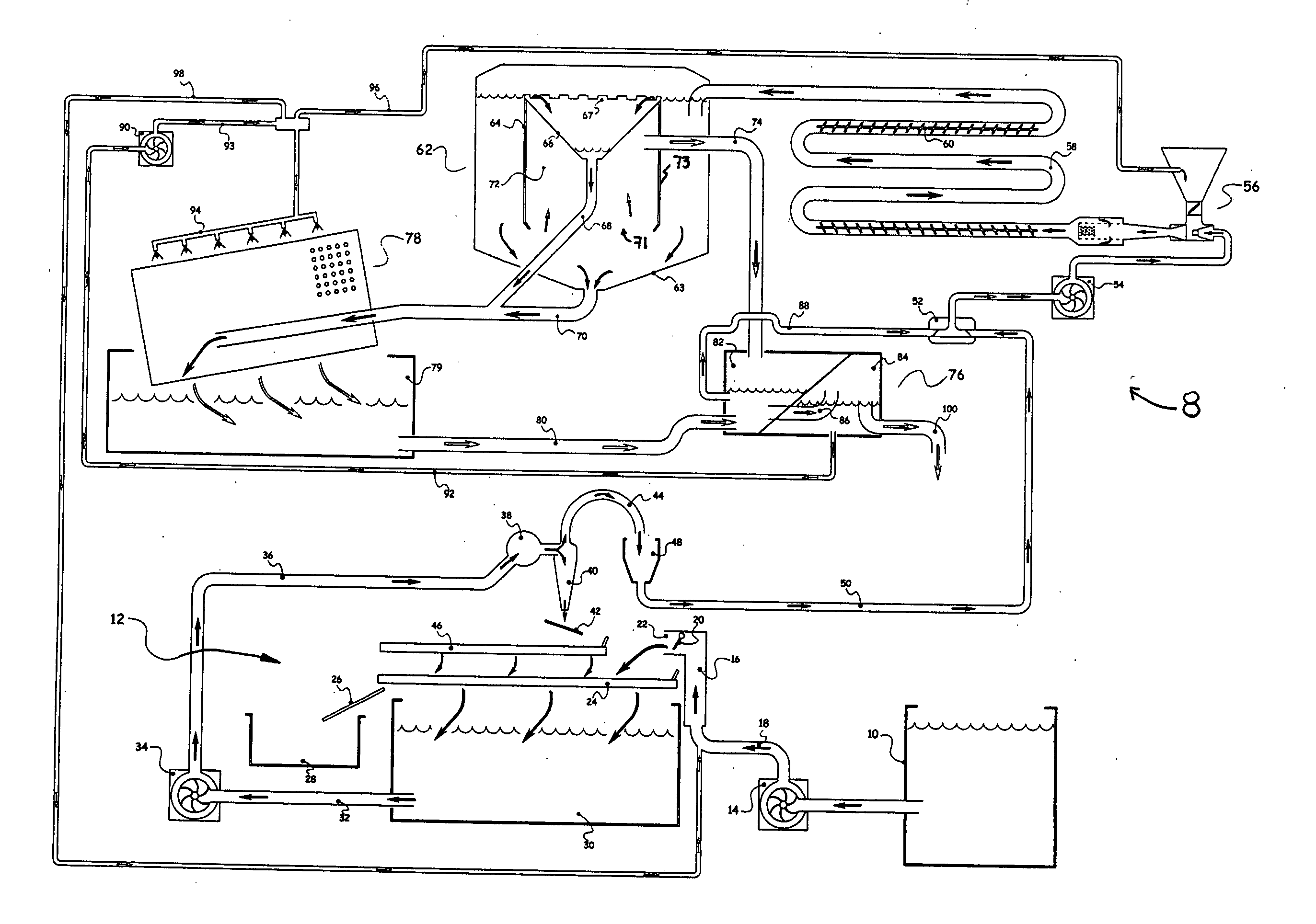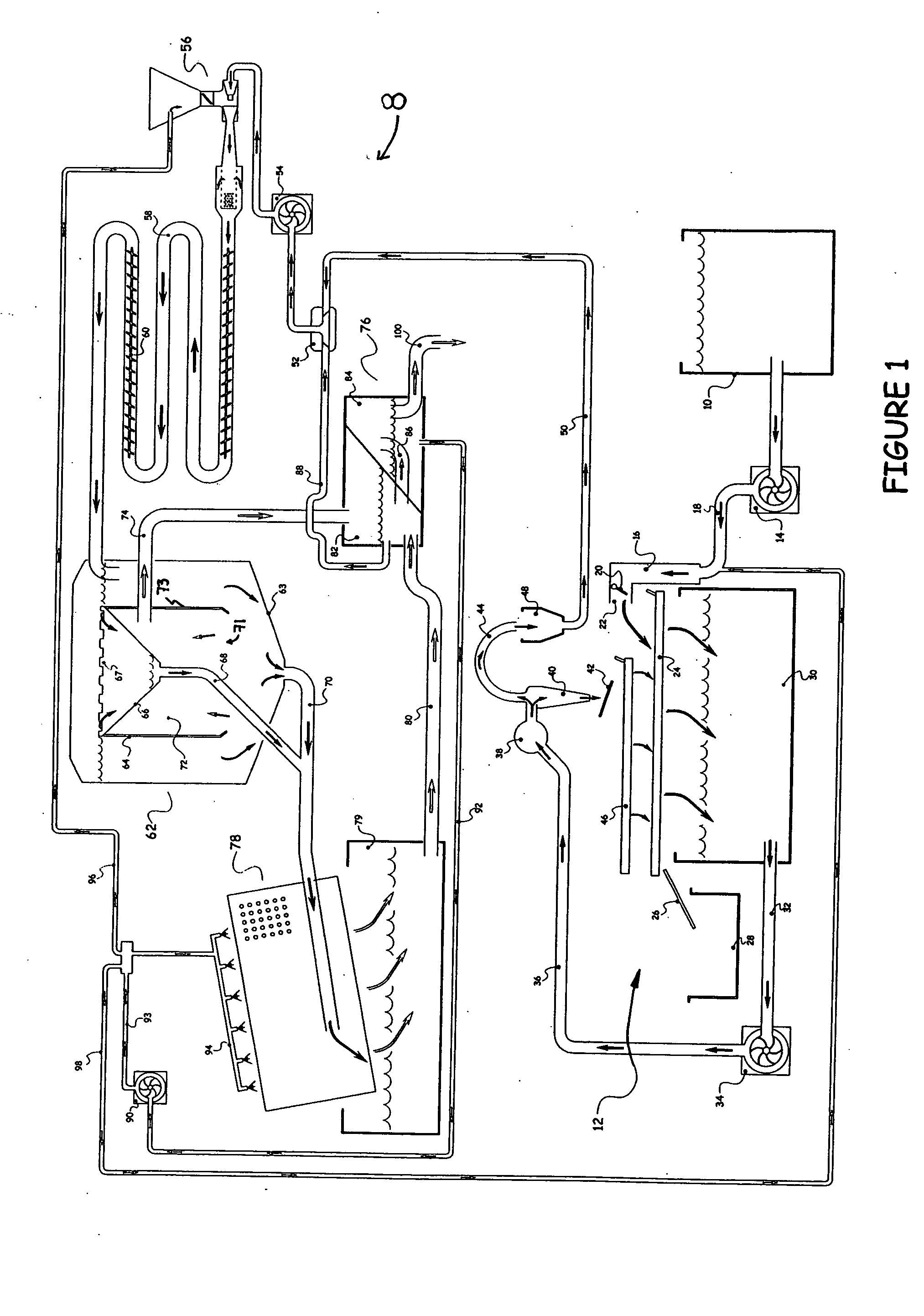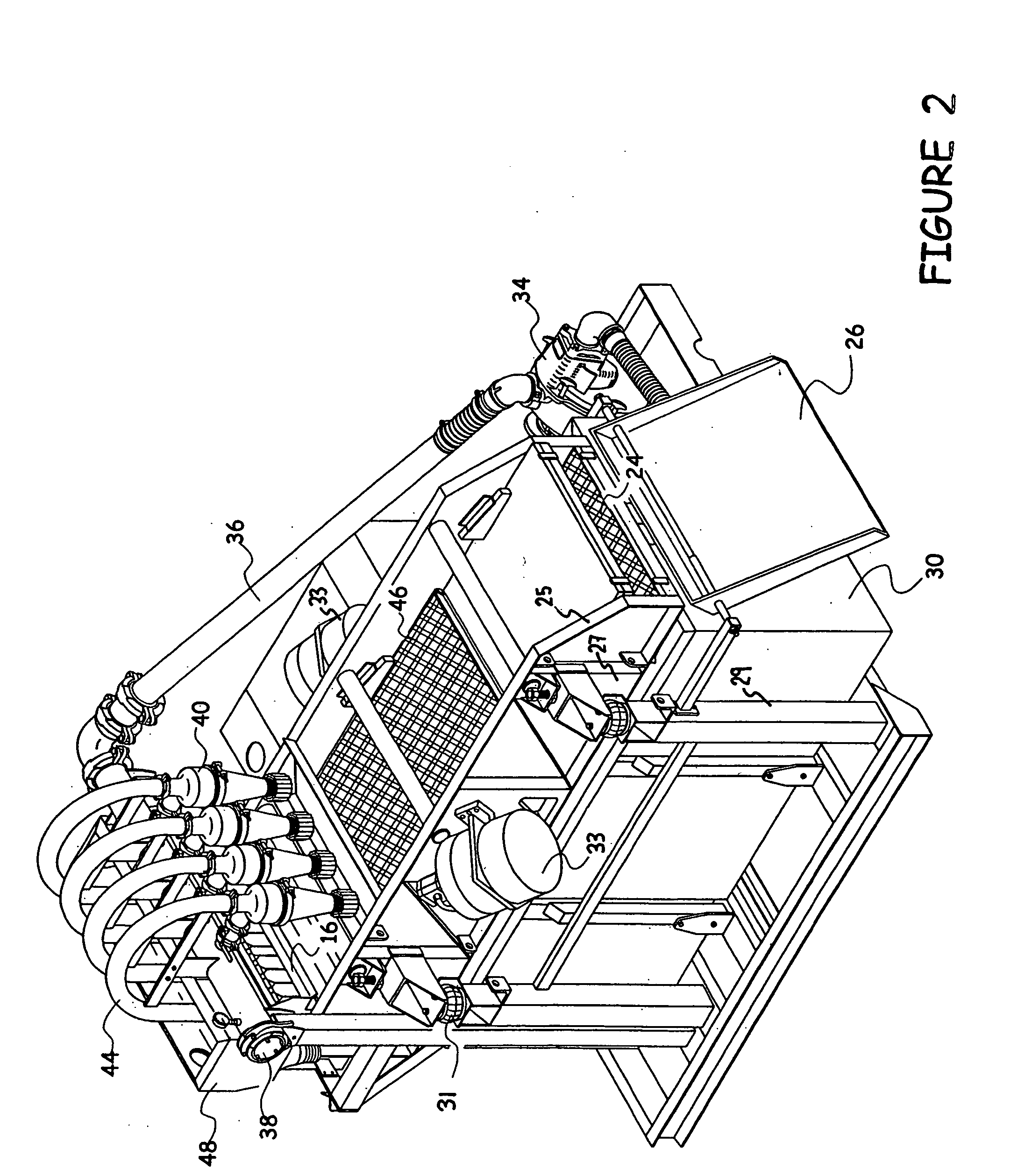Process and apparatus for treating liquid waste material
a technology of liquid waste and processing equipment, applied in the direction of water/sludge/sewage treatment, sedimentation settling tanks, centrifugal force sediment separation, etc., can solve the problems of waste management that has come under heavy criticism, and achieve the effect of enhancing the overall treatment process
- Summary
- Abstract
- Description
- Claims
- Application Information
AI Technical Summary
Benefits of technology
Problems solved by technology
Method used
Image
Examples
Embodiment Construction
[0036] In the following description, embodiments of an apparatus and process for treating liquid waste material are described. The liquid waste material treatment process involves various mechanical separations to separate solids components of the liquid waste material from the liquid fraction thereof, with the addition of a chemical treatment step to promote flocculation of suspended / colloidal matter or dissolved solids. Liquid waste material passed through the apparatus is ultimately separated into a solids fraction portion and an extracted liquid fraction portion.
[0037] The liquid waste material treatment process generally comprises four (4) stages making use of mechanical and / or chemical separation technologies. During stage one, incoming liquid waste material undergoes pretreatment to prepare the liquid waste material for flocculation. This stage may include one or any combination of steps including, but not limited to initial solids separation, pre-cleaning, ozonation with or...
PUM
| Property | Measurement | Unit |
|---|---|---|
| angles | aaaaa | aaaaa |
| length | aaaaa | aaaaa |
| length | aaaaa | aaaaa |
Abstract
Description
Claims
Application Information
 Login to View More
Login to View More - R&D
- Intellectual Property
- Life Sciences
- Materials
- Tech Scout
- Unparalleled Data Quality
- Higher Quality Content
- 60% Fewer Hallucinations
Browse by: Latest US Patents, China's latest patents, Technical Efficacy Thesaurus, Application Domain, Technology Topic, Popular Technical Reports.
© 2025 PatSnap. All rights reserved.Legal|Privacy policy|Modern Slavery Act Transparency Statement|Sitemap|About US| Contact US: help@patsnap.com



